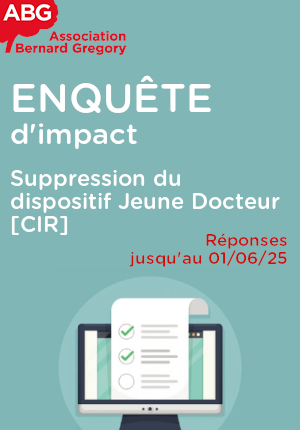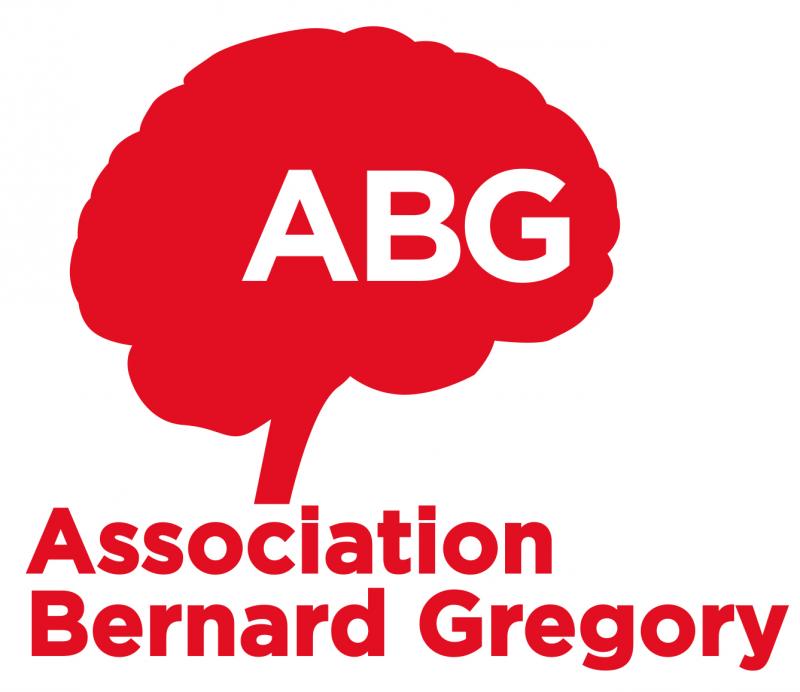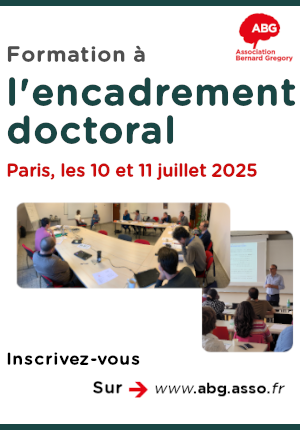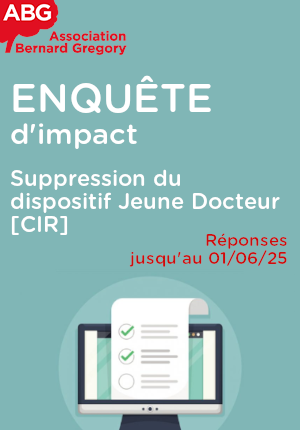Modélisation générative des cristaux de protéines // Generative Modeling for Protein Crystals
|
ABG-132219
ADUM-66314 |
Thesis topic | |
| 2025-05-27 |
Université Grenoble Alpes
Grenoble Cedex 9 - Auvergne-Rhône-Alpes - France
Modélisation générative des cristaux de protéines // Generative Modeling for Protein Crystals
- Computer science
deep learning, apprentissage profond géométrique, modèles de langage, bioinformatique, réseaux neuronaux graphiques, modèles génératifs
deep learning, generative models, bioinformatics, graph neural networks, geometric deep learning, language models
deep learning, generative models, bioinformatics, graph neural networks, geometric deep learning, language models
Topic description
L'avènement de l'intelligence artificielle (IA), et en particulier de l'apprentissage profond (AP), dans la conception de protéines thérapeutiques, a rendu crédible la promesse d'améliorer la santé humaine grâce à de telles macromolécules. Le récent prix Nobel de chimie 2024, décerné pour les avancées dans la conception et la prédiction de la structure des protéines, illustre l'impact rapide et profond de l'IA. Ces avancées ont transformé la biologie structurale et pourraient révolutionner la découverte de protéines thérapeutiques, ainsi que de nombreux autres domaines biotechnologiques. Concernant spécifiquement l'IA, un certain nombre de limitations subsistent cependant, liées à la stabilité « sur étagère » et in vivo (dénaturation, agrégation, etc.), à la pharmacocinétique et à la pharmacodynamique, à l'efficacité pour atteindre (« ciblage ») et reconnaître la cible (« affinité »), et aux interactions indésirables potentielles. C'est cet ensemble complexe de spécifications qui explique le nombre relativement faible de traitements disponibles aujourd'hui (environ 350 traitements approuvés par la FDA) et leur coût généralement prohibitif (entre 3000 et 40000 €/mois). Les enzymes produites à des fins biotechnologiques et biopharmaceutiques partagent plusieurs de ces problématiques. Néanmoins, la production de protéines sous forme de nanocristaux réduirait les problèmes de stabilité «sur étagère» et «in vivo», ainsi que la nécessité de les purifier biochimiquement, réduisant ainsi considérablement les coûts. De plus, la formulation cristalline des protéines thérapeutiques pourrait permettre leur administration prolongée, améliorant ainsi les conditions de traitement des patients en réduisant la fréquence d'administration. L'objectif du projet de thèse actuel est de développer un modèle d'IA capable de concevoir de tels cristaux à partir de protéines existantes ou de protéines conçues de novo. La précision du modèle sera évaluée par des expériences in silico et in vivo.
------------------------------------------------------------------------------------------------------------------------------------------------------------------------
------------------------------------------------------------------------------------------------------------------------------------------------------------------------
The advent of artificial intelligence (AI), and particularly deep learning (DL), in the design of therapeutic proteins has rendered credible the promise of improving human health with such macromolecules. The recent Nobel Prize in Chemistry 2024, awarded for the breakthroughs in protein design and structure prediction, illustrates the rapid and profound impact of AI. These advancements have transformed structural biology and hold the potential to revolutionize protein-therapeutics discovery, as well as many other biotechnology fields. Specific to the former, a number of limitations remains, however, related to ‘on-shelf' and in vivo stability (denaturation, aggregation, etc.), pharmacokinetics and pharmacodynamics, efficiency in reaching (‘targeting') and recognizing the target (‘affinity'), and potential undesirable interactions. It is this complex set of specifications that explains the comparatively small number of treatments available today (~350 FDA-approved treatments) and their generally prohibitive cost (between €3k and €40k/month). Enzymes produced for biotechnological and biopharmaceutical purposes share a number of these issues. Nevertheless, by producing proteins in the form of nanocrystals, the issues of ‘on-shelf' and ‘in-vivo' stabilities would wane, as well as the requirement to biochemically purify the proteins, dramatically reducing costs. Furthermore, the crystalline formulation of therapeutic proteins could afford their sustained delivery, improving patients' treatment conditions by reducing the required frequency of administration. Developing an AI model capable of designing such crystals from either already-existing or de novo designed proteins is the goal of the current PhD project. The accuracy of the model will be assessed by in-silico and in vivo experiments.
------------------------------------------------------------------------------------------------------------------------------------------------------------------------
------------------------------------------------------------------------------------------------------------------------------------------------------------------------
Début de la thèse : 01/10/2025
------------------------------------------------------------------------------------------------------------------------------------------------------------------------
------------------------------------------------------------------------------------------------------------------------------------------------------------------------
The advent of artificial intelligence (AI), and particularly deep learning (DL), in the design of therapeutic proteins has rendered credible the promise of improving human health with such macromolecules. The recent Nobel Prize in Chemistry 2024, awarded for the breakthroughs in protein design and structure prediction, illustrates the rapid and profound impact of AI. These advancements have transformed structural biology and hold the potential to revolutionize protein-therapeutics discovery, as well as many other biotechnology fields. Specific to the former, a number of limitations remains, however, related to ‘on-shelf' and in vivo stability (denaturation, aggregation, etc.), pharmacokinetics and pharmacodynamics, efficiency in reaching (‘targeting') and recognizing the target (‘affinity'), and potential undesirable interactions. It is this complex set of specifications that explains the comparatively small number of treatments available today (~350 FDA-approved treatments) and their generally prohibitive cost (between €3k and €40k/month). Enzymes produced for biotechnological and biopharmaceutical purposes share a number of these issues. Nevertheless, by producing proteins in the form of nanocrystals, the issues of ‘on-shelf' and ‘in-vivo' stabilities would wane, as well as the requirement to biochemically purify the proteins, dramatically reducing costs. Furthermore, the crystalline formulation of therapeutic proteins could afford their sustained delivery, improving patients' treatment conditions by reducing the required frequency of administration. Developing an AI model capable of designing such crystals from either already-existing or de novo designed proteins is the goal of the current PhD project. The accuracy of the model will be assessed by in-silico and in vivo experiments.
------------------------------------------------------------------------------------------------------------------------------------------------------------------------
------------------------------------------------------------------------------------------------------------------------------------------------------------------------
Début de la thèse : 01/10/2025
Funding category
Funding further details
Concours allocations
Presentation of host institution and host laboratory
Université Grenoble Alpes
Institution awarding doctoral degree
Université Grenoble Alpes
Graduate school
217 MSTII - Mathématiques, Sciences et technologies de l'information, Informatique
Candidate's profile
Nous recherchons des candidats motivés possédant une solide expérience en science des données, en mathématiques appliquées et en informatique. La connaissance de PyTorch et de la bioinformatique structurale est un atout.
We are looking for motivated candidates with a very strong background in data science, applied math and computer science. Knowledge of PyTorch and structural bioinformatics is a plus.
We are looking for motivated candidates with a very strong background in data science, applied math and computer science. Knowledge of PyTorch and structural bioinformatics is a plus.
2025-06-09
Apply
Close
Vous avez déjà un compte ?
Nouvel utilisateur ?
More information about ABG?
Get ABG’s monthly newsletters including news, job offers, grants & fellowships and a selection of relevant events…
Discover our members
 Ifremer
Ifremer  ANRT
ANRT  Aérocentre, Pôle d'excellence régional
Aérocentre, Pôle d'excellence régional  ONERA - The French Aerospace Lab
ONERA - The French Aerospace Lab 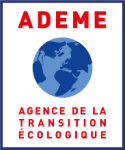 ADEME
ADEME  Tecknowmetrix
Tecknowmetrix  Généthon
Généthon  Groupe AFNOR - Association française de normalisation
Groupe AFNOR - Association française de normalisation  Laboratoire National de Métrologie et d'Essais - LNE
Laboratoire National de Métrologie et d'Essais - LNE  TotalEnergies
TotalEnergies  ASNR - Autorité de sûreté nucléaire et de radioprotection - Siège
ASNR - Autorité de sûreté nucléaire et de radioprotection - Siège  MabDesign
MabDesign  Institut Sup'biotech de Paris
Institut Sup'biotech de Paris  MabDesign
MabDesign  Nokia Bell Labs France
Nokia Bell Labs France  SUEZ
SUEZ  CESI
CESI 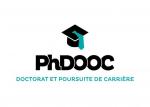 PhDOOC
PhDOOC  CASDEN
CASDEN



